LARGE ANIMAL RESCUE SKULL SESSION
|
DEATH ON US-50
HOW THE INCIDENT WAS RESOLVED |
|
This problem is based on a real scenario and is presented for a "Skull Session" discussion in the Technical Large Animal Emergency Rescue Facebook Group.
Location US-50 in the high desert east of Dayton, NV Date and Time August, in the morning. Incident Details While caring for horses in the back of the property I heard a loud boom. Looking in the direction of the noise I saw a rapidly developing column of black smoke.
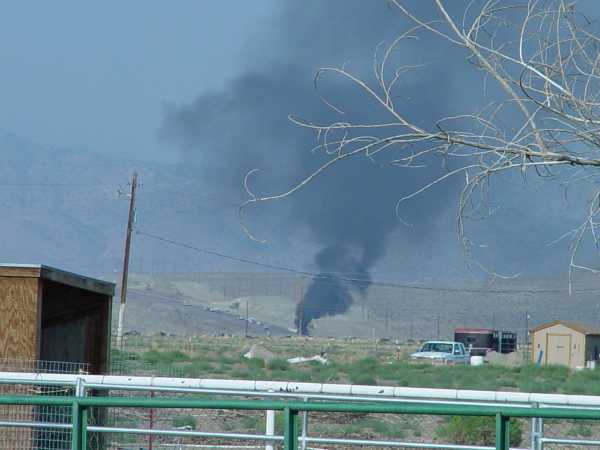
I drove a short distance from the incident, observed through binoculars that Fire and NHP were on scene with more units responding, and observed a stock trailer over the embankment that appeared to have animals inside next to an overturned pickup. Some other pile of debris, that we later discovered was a second stock trailer, lay alongside the overturned pickup. Farther to the west (up the hill) fire crews were putting out a significant fire involving two pickup trucks that had struck head on, one of those pickups towing a gooseneck flat bed trailer with a man-lift chained to the deck.
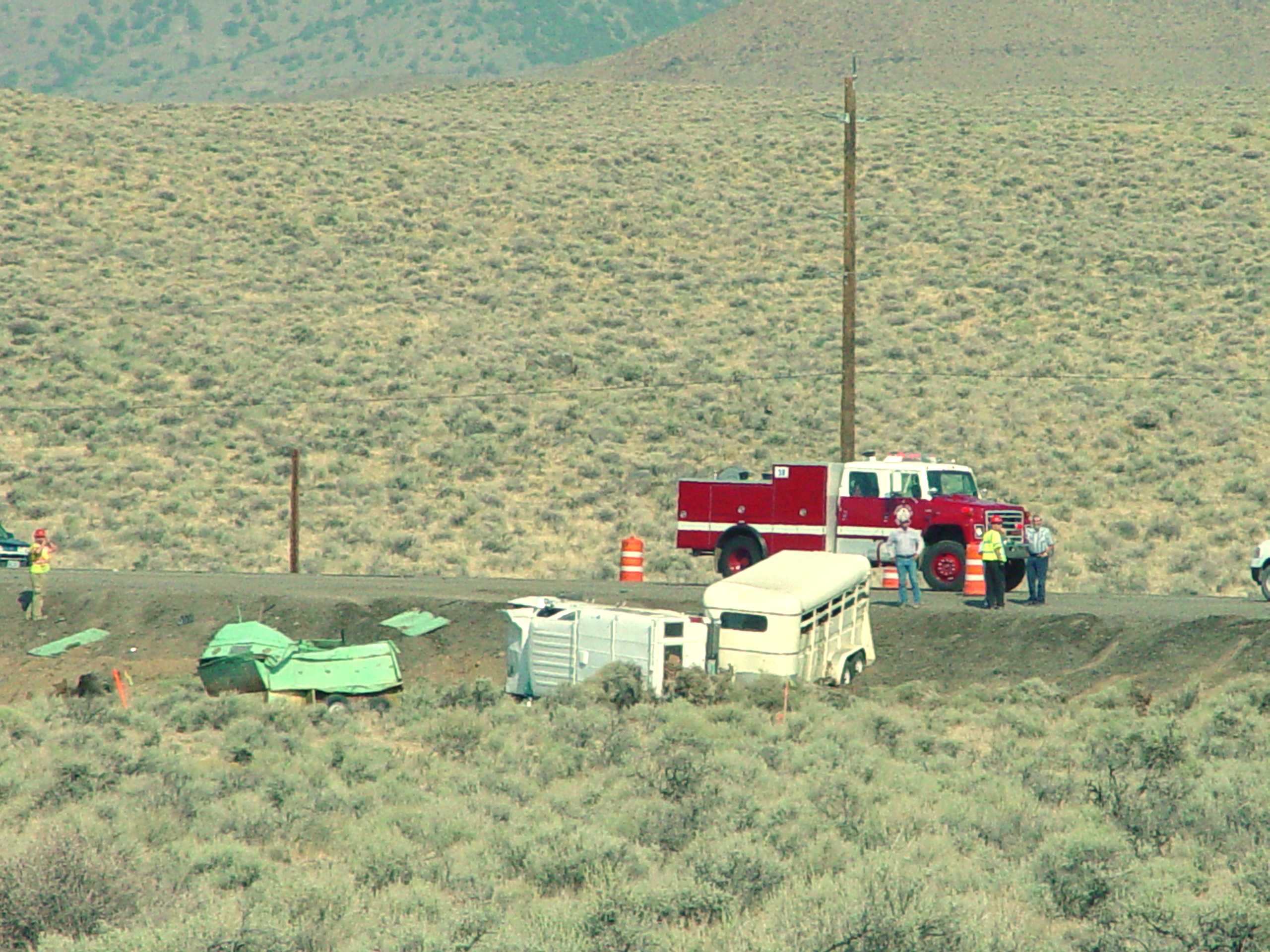
I notified Animal Services of a vehicle accident with a stock trailer off the road that contained live animals. Shortly after placing that call I received a call from Michael Connell that a large animal response team was requested to deal with the animal component of this incident. The highway was 2-lane and under reconstruction. At the point of impact the highway was lined with concrete K-rails, leaving no shoulders. NHP considered the incident a crime scene given that three people in one pickup and one person in the opposing pickup burned to death before fire crews arrived. While staging at the accident scene a witness indicated that a pickup traveling eastbound down the hill towing a stock trailer lost control, swerved into the oncoming lane, and struck the pickup towing the flat bed trailer. The stock trailer uncoupled from the pickup on impact and flew across the highway, ejecting young steers, and struck a second pickup that was towing a second stock trailer. That pickup went over the embankment and overturned. (The trailer that once contained the steers is the green one, a trailer that we discovered contained seven large pregnant cows is the white one.)
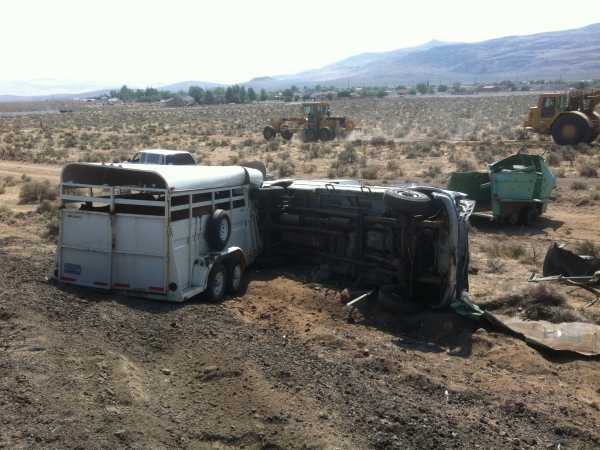
On observing the scene we noticed a dead steer on the highway and several steers bunched together that were slowly walking away up near a residential subdivision. We were required to stage a for considerable length of time while the human issues were addressed and the Major Accident Investigation Team performed their investigation, so the effect of summer heat on the pregnant cows still in the trailer was becoming an issue. Eventually we were allowed to address the animal issues. Mike Connell was in charge of this incident. Skull Session Questions
Group Feedback Those in the group providing comments recognized that this was both a multi-agency incident and a crime scene. The first priority therefore was to become integrated into the command structure, stage until authorized to enter, and make appropriate preparations. Next the team should determine if there is a Safety Officer in place and/or if one needs to be assigned for animal rescue group activities. Third would be to undertake some form of triage. What were the veterinary medical priorities? What were opportunities (tasks that could be undertaken before the priority tasks could be addressed?) Three distinctive issues were identified by the group, pregnant cows that remained in a very crowded trailer, a dead steer on the roadway and loose steers wandering near the highway. An assessment of resources was needed and appropriate additional resources ordered. Functional roles had to be assigned and the various participants had to remain accountable and communicate via the chain of command.
The actual dispatch order came from the Division of Emergency Management with Michael Connell in charge so integration into the Incident Command System was relatively easy. Connell requested a panel trailer and a transport trailer from the team.
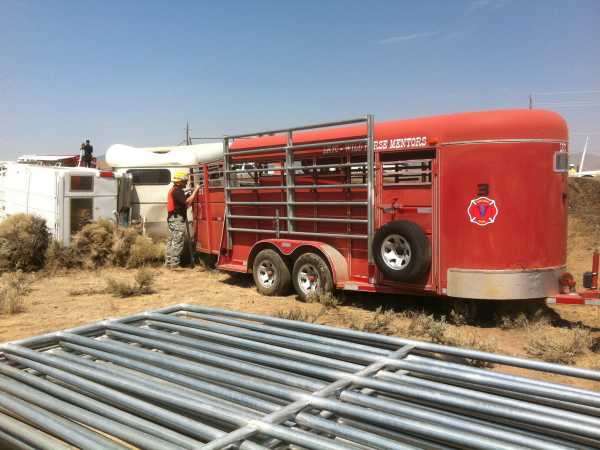
NHP identified the "crime scene" boundaries so we staged and operated outside that perimeter until allowed in. Local citizens located all but one of the wandering steers and herded them into the back field of a nearby ranchette. Another citizen on an ATV drove out in search of an injured steer that did not join the group that was contained. NDOT agreed to remove the dead steer with a loader and dump truck and take it to the landfill. The immediate remaining priority involved the pregnant cows in the still-upright trailer. We were allowed to inspect the trailer where we discovered six standing cows and one lying down. This was going to be a long scene. Construction crews actually plowed out a dirt bypass to allow motorists to pass. We then had concerns about the heat and the cows in the trailer, especially if they had to be corralled before authorization was given to relocate them. Therefore the Portable Water Supply was dispatched to water the cows should it have become necessary.
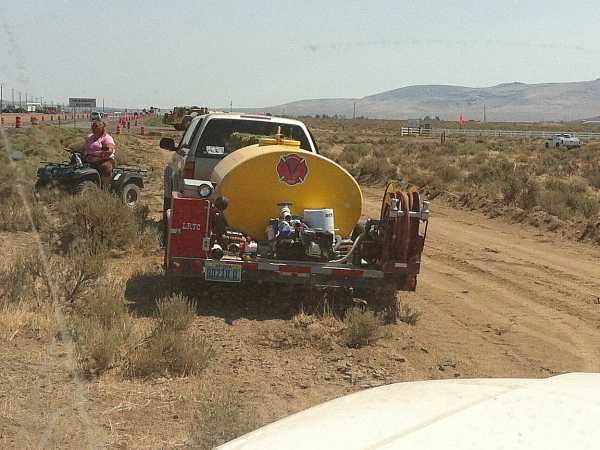
A plan was agreed upon to remove the pregnant cows by constructing chutes in a way that was safe for the animals but would minimally impact the accident investigation. The rear trailer gate was able to be opened sufficiently to offload the cows.
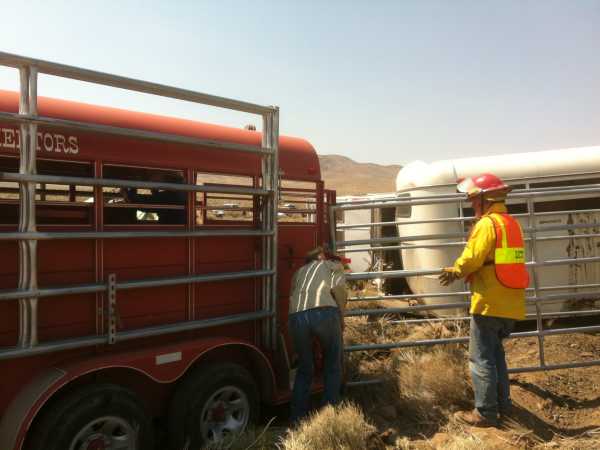
An official from the Nevada Department of Agriculture authorized the cows to be transported to Fallon on a "department hold" where they could be checked for injuries. However we quickly discovered that the entire load of cows was far too heavy to be transported in one trailer. A second stock trailer was requested. As the cows were being transferred, the cow that was laying down got to her feet and appeared to be relatively uninjured. All the cows were then shipped to Fallon. Meanwhile the ATV rider located the injured steer which was loaded into another stock trailer. The panels were redeployed to facilitate the orderly loading of the steers that were bedded down inside the ranchette field.
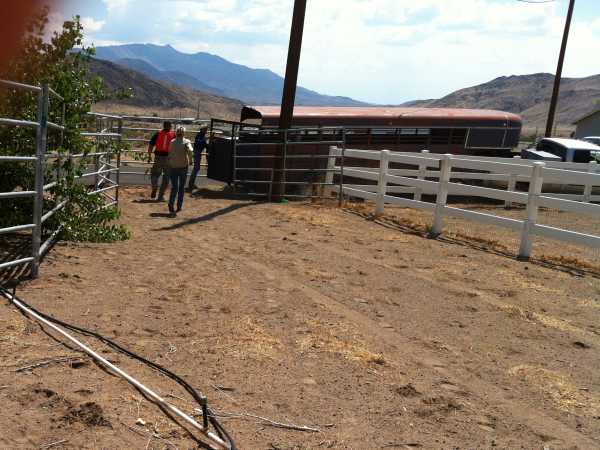
These animals were transported to Fallon by a citizen-volunteer. Upon conclusion of their assignments, the team personnel demobilized and later submitted a detailed report to the Major Accident Investigation Team. You can view a copy of the NHP press release and additional photos of this incident by clicking here.
Go to Skull Session IndexReturn to the Strike Team LRTC Page |
This material is intended for the use of the Technical Large Animal Emergency Rescue (TLAER) Facebook Group. TLAER is a trademark of Technical Large Animal Emergency Rescue. |